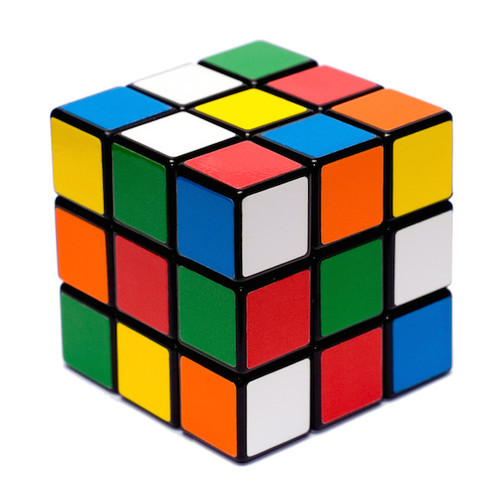No Adjacent Colors on Cube
 A Rubik's Cube is turned multiple times such that any two adjacent faces of two adjacent cublets have different colors. Find the minimum number of turns of the Rubik's Cube to achieve this.
A Rubik's Cube is turned multiple times such that any two adjacent faces of two adjacent cublets have different colors. Find the minimum number of turns of the Rubik's Cube to achieve this.
Details and Assumptions
A turn on a Rubik's cube is either turning a face , , or clockwise.
The Rubik's cube starts at its solved state.
In the picture below, is adjacent to , , and . However, , , and are pairwise non-adjacent.

The answer is 6.
This section requires Javascript.
You are seeing this because something didn't load right. We suggest you, (a) try
refreshing the page, (b) enabling javascript if it is disabled on your browser and,
finally, (c)
loading the
non-javascript version of this page
. We're sorry about the hassle.

First note that any two colors on a single cublet is always different colors (this is pretty obvious). Thus we just need to consider two adjacent faces of two adjacent cublets.
There are 1 2 adjacent cublet faces on a single Rubik's cube face(just count them). Thus, there are 7 2 adjacent cublet faces in total. Each turn can destroy at most 1 2 adjacencies (3 adjacencies per the 4 faces affected) so the lower bound is 7 2 ÷ 1 2 = 6 .
This minimum is achievable by doing the common checkerboard pattern, thus the answer is 6 .